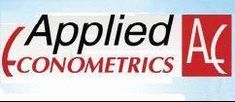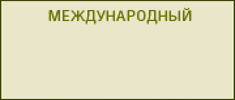Authors
Orehova S.
|
Degree
|
PhD in Economics, Ural State University of Economy |
|---|---|
|
E-mail
|
bentarask@list.ru |
|
Location
|
Yekaterinburg |
|
Articles
|
Formation of sustainable competitive advantages of firm in context of resource conceptionEconomy development doesn’t allow to use former designs of strategic management. A base reference point for formation of steady competitive advantages, and according to long-term strategy of development of firm, is orientation to internal resources and abilities to the company. Objective of this research is specification of theoretical bases of the theory of dynamic abilities and identification of the mechanism of a choice of strategy with use of the resource approach. According to the modern resource concept the company, forming development strategy, should follow such logic of creation of competitive advantages: manufacture factors — resources — isolation mechanisms — dynamic capabilities — the сore competence — products. Read more...Discussion on the dynamic capabilities of firmThe existing management reporting much transformed in the by the theory of dynamic capabilities, as the company recognized a significant player in the institutional environment as a force capable to change the market in which it operates. The proposed study investigates the sources of dynamic capabilities, effects, which is the dynamic nature of capabilities for the firm. The author conducted the analysis of terminological concept of «dynamic capabilities the firm» proposed and justified the division of the firm’s ability to static and dynamic. The article also presents the preliminary results of the analysis of small businesses Sverdlovsk Region, identified the main dynamic capabilities that allow them to achieve sustainable competitive advantage in the market. Read more...Selection of banking strategy on the basis of its dynamic capabilitiesThis article studied on the basis of the existing approaches to assessing the level of dynamic capabilities of the company proposed a model of the author’s choice of study strategies based on dynamic capabilities. The basis of the approach is the comparative assessment of the results of a particular firm and the market in which it operates. The method is based on the assumption that the presence of dynamic capabilities allows the company to more successfully than the overall market, configure the available resources and, consequently, have more efficient than the market average. The study was carried out in the breaking of the specifics of the banking sector of the Russian economy and approved by the example of «Sberbank of Russia». The result of the study is developed tools for choosing the bank’s strategy on the basis of its assessment of the level of dynamic capabilities.
Read more...
Human capital as a source of sustainable competitive advantage of the company: the problems of applicationOn the basis of studying the properties of the company’s resources in the context of modern
resource describes the concept of human capital as a specific asset. The author there are three
groups of factors that explain the difficulties in applying the human capital to build a sustainable
competitive advantage by Russian companies. These factors include: the properties of the human
capital, the structure and specificity of the Russian economy, as well as especially the institutional
environment of the Russian labor market. Based on the study of these factors in research stands
out and describes the main characteristics of the optimization model of the human capital management
firm, typical of Russian companies — the minimum investment in the human capital of
employees of the firm; the use of price and time adjustment in adapting to changes in the institutional
environment; relation to an employee as a «cost center» rather than «center investments.»
The author considers the use of this model of human capital management firm losing in terms of
the formation of long-term sustainable competitive advantage.
Read more...
Resource strategy of a firm: investment models and Russian specificsIn the situation of resources limitation, which the Russian economy has been facing with in the
recent years, it is important to set the priorities and define the factors that influence on the way investments
are made into the resources of firms. The study is directed at the explanation of choosing
an investment model of different kinds of resources in Russian companies. To justify the choice of
a model the authors offer to use the control criteria over the resources, determined by a bungle of
property rights of an investor. Clarifying the economical category ‘resources’ from the position of the
resource-based view and relational view let the authors distinguish 2 models of attracting resources:
the model, focused on the acquisition of assets, and the model, focused on the temporary mobilization
of resources available in the network or market. In the course of critical comprehension of
choosing this or that model the three groups of factors were defined. The global changes of conditions
and factors of business operation belong to the first group. The second group is connected to
the specifics of institutional environment of Russian business. The third group of factors is defined
by the properties of the resources themselves, the advisability of investing into them in conditions
of a certain institutional environment. The systematic assessment of all factors let the authors to
make a conclusion that the global trend is businesses switching to the model, focused on temporary
mobilization of resources available in the network. This fact is due the ratio of transactional and
transformational costs while obtaining property rights for a resource.
The influence of the Russian institutional environment led to the use of an intermediate resource
investment model by firms. This model is based on the hybrid mode of a business structure characterized
by strict barriers and institutional mechanisms of coordination. Investors choose tangible
and relational assets as an investment object and they are not willing to invest into human capital
and organizational resources. The authors made the conclusion the use of this strategy of attracting
resources is not effective for the Russian economy in the long run.
Read more...
Resources and Sustainable Growth of Industrial Metallurgical Enterprises: an Empirical AssessmentThe article is devoted to an estimation of resource’s portfolio influence on sustainable growth
of industrial enterprises. We clarified terminology and systematized approaches to measuring the
enterprise’s sustainable growth and the factors affecting it. On the basis of the author’s previous
studies, we have the hypothesis that investments in the material assets are the most profitable for
the Russian industrial enterprises development. Due to institutional and macroeconomic factors,
enterprises tend to minimize long-term investments.
We used SPARK Interfax data of industrial metallurgical enterprises for 2009 – 2015. Author did
econometric estimation of asset’s influence and resource portfolio in general on growth in the short-,
medium- and long-term periods.
The results illustrate that investments in the resource portfolio have a negative impact on business
performance. Investments in financial and material assets have the greatest influence on the profitability’s
increase in the industrial metallurgy enterprises. Any intangible assets investments negatively
affect the future enterprises profitability. Investments in resources for metallurgical enterprises are
more profitable in the medium term than in the short or long term.
The average strength of the correlation between resource’s investment and sustainable growth
testifies to the presence of other factors. In fact, institutional and macroeconomic factors determine
the development of Russian business. It means, Russian owners can’t control enterprises. This result
confirms the author’s previous theoretical conclusions.
Read more...
On the Phenomenon of Business ModelCritical analysis of research studies in the field of organization and management shows that there is a growing interest in the phenomenon of business models within the system of strategic management theories. The paper systematizes the theoretical basis of the concept under examination. Having performed content analysis of a wide array of scientific publications, the authors identify seven stages in the evolution of approaches to studying business models. We clarify the evaluation criteria that distinguish the concept of business model from strategy, such as the structural framework, dynamic capabilities, goals, etc. The article proposes the approaches to classifying the analytical construct of business model, i.e. the purpose of creation, the application sphere, the basis for emergence, the way of value transfer, etc. The study clarifies the research program of the business model components, which suggests the mandatory assessment of the six elements: value, business organization, monetization, consumers, resources and the market. Systematization of knowledge in the field of business modelling significantly improve management efficiency and flexibility of companies the short run. The most promising areas for future research are further development of typologies of business models, analysis of their dynamic capabilities and effects of their functioning. Read more...
|



